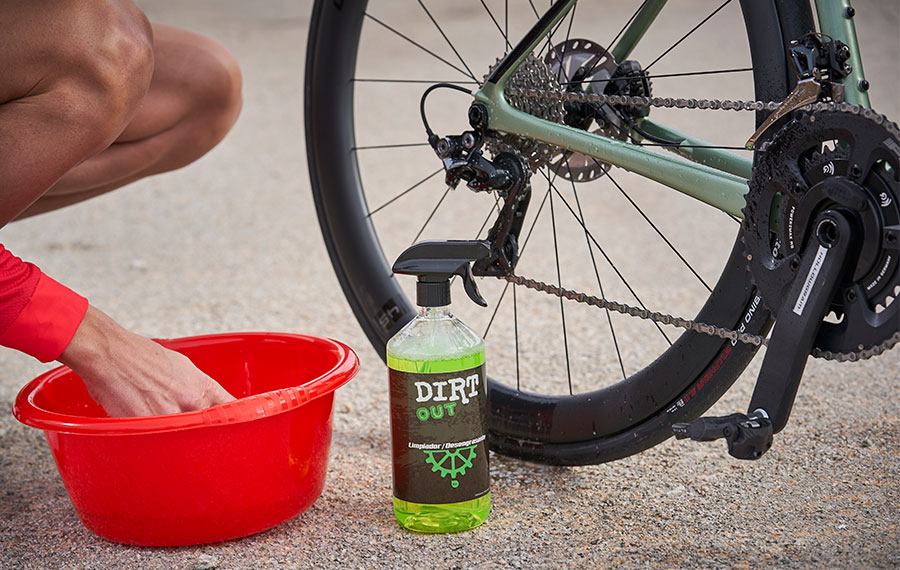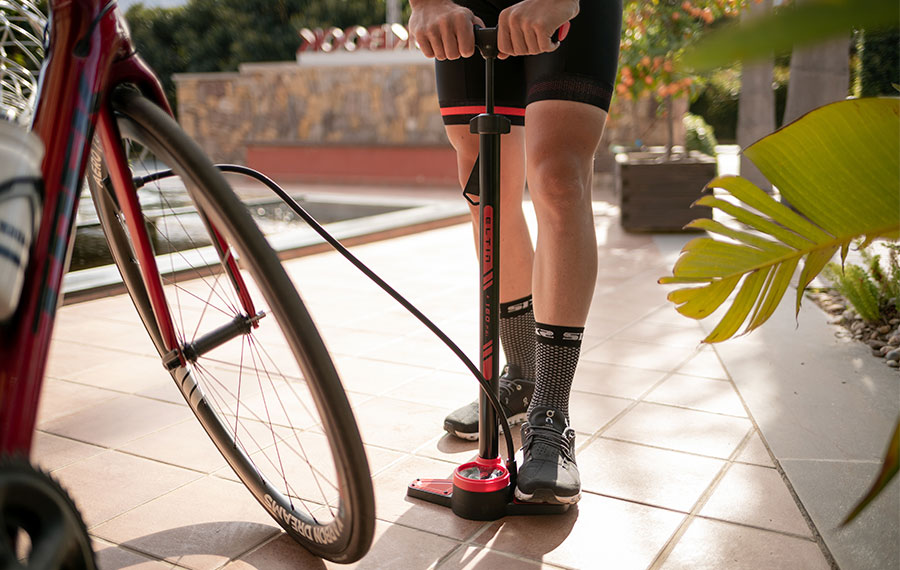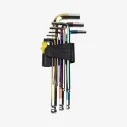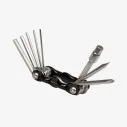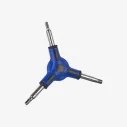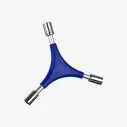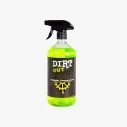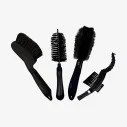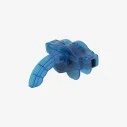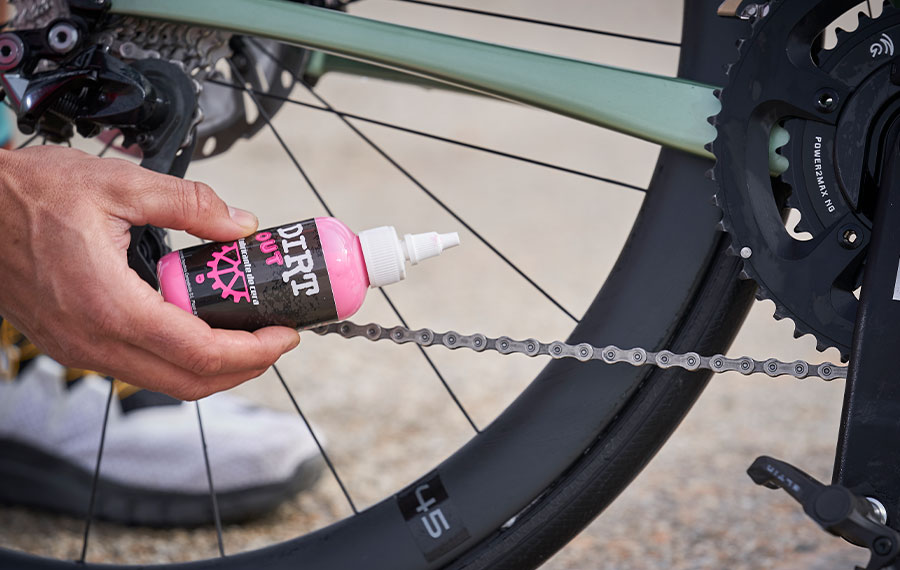In this article, we’ll walk you through the steps to get your bike ready so you can start enjoying your rides and all the benefits of cycling. Don’t hesitate get moving!
After some time without riding your bike, the moment finally comes when you decide to get back in the saddle. You're ready and head to the storage room where you remember leaving it months ago and… Surprise! You realise it's not ready to roll — or if it does, you're greeted with a series of unpleasant noises and sensations.
Indeed, your bike isn’t in top shape due to a lack of recent attention. But don’t worry — getting it ready again is possible with just a few simple steps.
To do so, you’ll need specific cleaning and maintenance products, tools, and spare parts. That’s why we recommend our wide range of Dirt Out products to help you with everything your bike needs.
Ready to discover the steps? Let’s get started!
1. Clean your bike
The first thing you need to do is clean your bike. By removing dust and dirt, it will be easier to identify any potential damage or unusual noises. This step also makes the following ones much smoother, as a proper tune-up requires a clean bike.
To learn how to do it, visit our article that shows you which products to use and the steps to follow.
2. Check your bike’s wheels
Once your bike is clean, the next thing to check is the condition of the wheels, as they are the main point of contact with the ground. If they’re completely flat, inflating them will reveal whether they’re punctured or simply lost pressure from lack of use. In the first case, you’ll need to replace the inner tube. To learn how, here’s a video from our friends at GCN that explains it perfectly.
If there’s no sign of a puncture, you’re in luck—just inflate the tyres to the manufacturer’s recommended pressure, which is indicated on the side of the tyre. It’s usually listed in both bar and PSI, so if you have a pump with a pressure gauge, you can measure it easily. If not, just make sure the wheels are inflated enough to ride comfortably. You can adjust pressure depending on terrain and weather conditions like rain, but always stay within the recommended range.
Also, check the tyre tread to ensure it’s still safe to ride. If the rubber is worn down and the tread is no longer visible, you should replace the tyres for safety, as your bike needs proper grip.
If you haven’t used your bike for a long time, it’s a good idea to remove the tyre and check that the rim tape isn’t porous. And if your wheels use tubeless tyres, keep in mind that the sealant expires and needs to be replaced periodically.
3. Tighten your bike’s bolts.
The bolts must be tightened, but not excessively. You don't need to tighten every single bolt each time you get your bike ready, but you should check that none are loose.
Inspect the bolts on the handlebar, saddle, pedals, and front end... For this, it’s very useful to have a multi-tool that allows you to adjust all the bolts on any bike.
Finally, something very important: whether or not you've removed the wheel from the frame to carry out any adjustments, always make sure the bolts are properly tightened and the wheel is securely in place before riding.
4. Check your bike's brakes
Brakes are the main safety component of a bicycle, so they must be in perfect condition. There are different types of brakes, which can be classified into two categories: those that brake through contact with the rim and those that use a disc as the braking system. These are commonly known as rim brakes and disc brakes.
For both types, you may encounter various signs indicating that the brakes are not in proper condition. One of the most common is strange noises or squeaking when braking. If this happens, it's likely because the pads are not in the correct position or the disc is rubbing, so you'll need to adjust their alignment. It can also happen that the brakes are not working properly due to wear. The braking system should be checked and replaced regularly to ensure proper function. If you don't feel immediate action or effective braking, do not ride your bike until you replace the disc brake pads or the rim pads.
A very common issue on bikes that haven't been properly maintained for a while is that the brake arms do not return to their original position after braking. They get stuck because the springs have weakened due to lack of maintenance or age, or because the brakes are not properly calibrated.
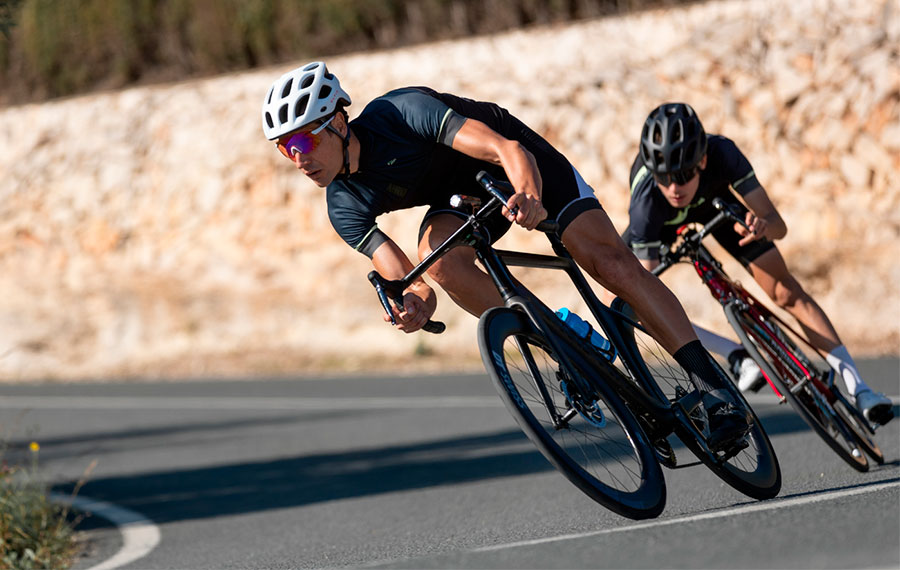
5. Check that your bike’s drivetrain is working properly
The drivetrain system is responsible for ensuring the bicycle rolls smoothly and that pedalling is comfortable.
To get it ready, you’ll need a brush, degreaser, lubricant, grease, and a cloth.
Dirt Out Degreaser 1l
€10.95
Dirt out Wax Lubricant 150ml
€11.95
Chain Cleaner
€23.70
Dirt out Degreaser 5l
€46.25
Dirt out Degreaser 20l
€171.95
Dirt Out Wax Lubricant 500ml
€14.80
First of all, clean the chain and check that the teeth are not excessively worn, which could cause the chain to come off easily. Using a cloth and some degreaser, rotate the cranks so the chain runs over the paper and allows you to remove accumulated dirt and grease. Then, clean the cogs, chainrings, and jockey wheels (link to the jockey wheel article) using the brush and degreaser.
Once the cleaning is done, dry everything to remove any remaining residue and check the condition of the chain. Ideally, you should use a chain checker to see if it’s within the recommended range. If the tool shows between 0.5 and 0.75, replace the chain to prevent breakdowns.
Next, we move on to lubricating the components. It’s essential that all parts operate smoothly, so you must use specific products. Apply lubricant to the chain, chainrings, and cogs.
Now let’s grease the chain. Just as you did when cleaning it, rotate the chain while applying grease. Once the process is complete, wipe away any excess grease or lubricant left on the drivetrain.
Finally, a very important part of the drivetrain system is the derailleur. Check that it is properly aligned and sits one millimetre above the tallest tooth on the big chainring. This will prevent the chain and cage from rubbing. Also make sure the derailleur pulleys and cogs are properly aligned.
We hope this guide has helped you get your bike ready so you can enjoy it to the fullest. Remember to always use specific products for tuning and maintenance, and if you have any doubts or need specialised attention, be sure to visit a bike workshop.
Get your bike ready and start pedalling! #KeepOnCycling
